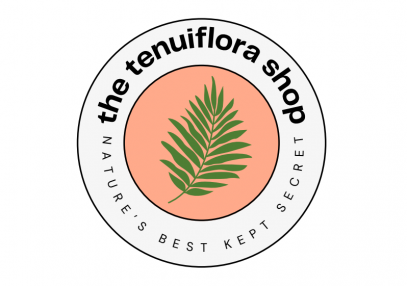Natural dyeing is more than a craft—it’s a return to tradition and a way to reconnect with nature through fabric and color. If you’ve fallen in love with earthy tones and plant-based methods, you’ve likely heard about the incredible results of dyeing with mimosa hostilis root bark. This botanical, revered by artisans for its ability to produce stunning pinks, browns, and purples, is quickly becoming a must-have. But before you dive in, the most important question is simple: where to buy mimosa hostilis root bark for dyeing?
In this guide, we’ll cover everything you need to know about sourcing this incredible dye material safely, ethically, and smartly.
Why Mimosa Hostilis Root Bark is a Favorite Among Natural Dyers
Mimosa hostilis (sometimes referred to as mimosa tenuiflora) has been used for centuries in traditional medicine and dyeing practices. When prepared correctly, its inner root bark creates rich natural dyes without synthetic chemicals. Here’s why natural dyers love working with it:
- High Tannin Content: Tannins help bind dye to fabric naturally, which means longer-lasting, colorfast results.
- Versatile Color Palette: Depending on fabric, mordants, and pH, mimosa hostilis can create soft blush pinks, deep browns, rustic reds, and muted purples.
- Eco-Friendly: This plant-based dye alternative helps reduce the need for synthetic chemicals, making it ideal for sustainable fashion and eco-artisans.
What Makes a Good Source of Mimosa Hostilis Root Bark?
Before we talk about where to buy mimosa hostilis root bark for dyeing, let’s discuss what makes a supplier worth trusting. The growing demand for natural dye materials has led to a surge of vendors, but not all offer the same level of quality and ethics.
1. Ethically Sourced
This is huge. Mimosa hostilis grows wild in regions of Mexico and Brazil and plays a role in the local ecosystems. Ethical harvesting ensures trees are left to regenerate and habitats are protected.
2. Clean and Pure
For dyeing, bark must be finely ground, free from dirt and debris, and properly processed. Clean bark makes the dye extraction easier and prevents impurities from affecting your color.
3. Lab-Tested
Trustworthy vendors will often offer lab reports or Certificates of Analysis (COAs) to show that their bark is free of harmful contaminants like mold or heavy metals.
4. Community Trusted
Look for vendors with excellent reviews from other artisans. Natural dyeing communities often share sourcing tips and help weed out unreliable sellers.
Where to Buy Mimosa Hostilis Root Bark for Dyeing (What to Look for in Vendors)
When buying mimosa hostilis root bark for dyeing, your vendor should be transparent and artisan-focused. Here are a few things to watch for when deciding where to buy:
Transparency of Origin: Vendors should state where their bark is sourced. Mexican and Brazilian bark is prized for its dyeing qualities.
Finely Powdered Bark: Look for vendors who offer bark that is processed specifically for dyeing. This saves time and helps create rich, even color.
Ethical Partnerships: Companies that work directly with local harvesters and reinvest in the communities they source from often have the most sustainable products.
Customer Support: Helpful guides, tutorials, and quick customer service responses are signs of a vendor who cares about your craft.
How to Use Mimosa Hostilis Root Bark for Dyeing
Once you’ve sourced your bark, using it is simple yet rewarding.
Materials Needed:
- Mimosa hostilis root bark powder
- Non-reactive pot
- Water (preferably distilled)
- Natural fabrics (cotton, linen, silk, wool)
- Mordant (optional)
- Strainer or cheesecloth
Dyeing Process:
- Extract the Dye:
- Add bark powder to water (about 50g per 500ml of water).
- Simmer for 1-2 hours.
- Strain out solids to create your dye bath.
- Prepare Fabric:
- Pre-mordant fabrics with alum for more vibrant, lasting color.
- Wet the fabric before adding it to the dye bath.
- Dye the Fabric:
- Simmer fabric in the dye bath for 1-2 hours.
- For deeper tones, leave overnight.
- Rinse and Cure:
- Rinse gently with cool water until clear.
- Hang to dry away from direct sunlight.
Where to Buy Artisan-Quality Mimosa Hostilis Root Bark for Dyeing
If you’re wondering where to buy mimosa hostilis root bark for dyeing that is clean, ethical, and artisan-approved, look no further than Tenuiflora Shop.
Our mimosa hostilis root bark powder is:
- Sustainably sourced from respected harvesters in Mexico and Brazil
- Finely ground and easy to work with
- Lab-tested for purity and quality
- Loved by natural dyers, herbalists, and artisans worldwide
We work hard to ensure that every batch meets the needs of dye artists who want beautiful, natural color without compromise.
External Resource for Botanical Insight
For more about mimosa hostilis as a plant and its history, visit Kew Gardens Plant Profile.
Final Thoughts
Natural dyeing is an art form that connects us to nature in a way few modern crafts do. But your results are only as good as your materials. If you want earthy, timeless colors and a dyeing experience free of synthetic shortcuts, sourcing matters.
Knowing where to buy mimosa hostilis root bark for dyeing can make all the difference between dull, uneven colors and breathtaking, artisan-quality results.
Choosing an ethical, reputable vendor ensures you are getting the best of what this incredible plant offers while supporting sustainable practices and local communities.
Ready to make your next dyeing project truly special? Shop premium Mimosa Hostilis Root Bark Powder here and experience plant-based color as it was meant to be.
Tagged: where to buy mimosa hostilis root bark for dyeing, natural dyes, plant-based color, sustainable fabric dye, artisan dyeing, eco-friendly textiles

Image Source: Wikimedia Commons

